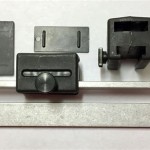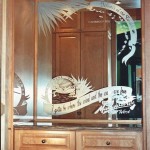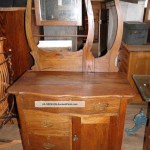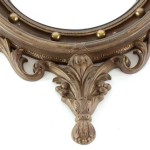Why Convex Mirrors Are Used in Cars
Convex mirrors are a crucial safety feature in vehicles, offering a wider field of view than plane or concave mirrors. This expanded perspective allows drivers to see more of the surrounding environment, significantly reducing blind spots and enhancing overall driving safety. Understanding the properties of convex mirrors and their application in vehicles provides insight into their importance in mitigating traffic accidents and promoting safe driving practices.
The fundamental principle behind the effectiveness of convex mirrors lies in their outwardly curved reflecting surface. This curvature causes light rays to diverge upon reflection, effectively spreading the reflected image over a larger area. Consequently, the image appears smaller than the actual object but encompasses a broader visual range. This wide-angle view allows drivers to observe objects and vehicles that would otherwise remain unseen in a plane or concave mirror.
Unlike plane mirrors which produce images of equal size to the object, and concave mirrors which can magnify images depending on the object's distance, convex mirrors consistently produce diminished images. While this might seem like a disadvantage, the smaller image is a necessary trade-off for the expanded field of view. The primary purpose of a car's side-view mirrors is not to provide a detailed image of the objects but rather to give the driver a general awareness of the presence and position of objects in their peripheral vision.
The strategic placement of convex mirrors on the sides of vehicles addresses the inherent limitations of the driver's direct line of sight. These mirrors provide a view of the adjacent lanes and the areas behind and slightly to the sides of the car, effectively eliminating blind spots that would be impossible to monitor without them. This enhanced awareness is particularly crucial when changing lanes, merging onto highways, or navigating tight spaces like parking lots.
The use of convex mirrors in cars is not merely a convention but is often mandated by traffic regulations and safety standards in many jurisdictions. These regulations recognize the vital role convex mirrors play in reducing accidents caused by lane changes and merging maneuvers. The legal requirement underscores the importance of these mirrors as a fundamental safety feature, ensuring drivers have adequate visual information to make informed decisions on the road.
The phrase "objects in mirror are closer than they appear" is commonly etched onto convex mirrors. This warning is a direct consequence of the image diminution caused by the mirror's curvature. Because the image appears smaller, the brain interprets the object as being further away than it actually is. This warning reminds drivers to account for this perceptual distortion and judge distances carefully, preventing miscalculations that could lead to collisions.
The benefits of convex mirrors extend beyond passenger vehicles. They are widely used in a variety of contexts where a wide field of view is essential. Large trucks and buses, which have significantly larger blind spots, rely on convex mirrors to improve visibility. Security applications, such as surveillance in stores and parking garages, utilize convex mirrors to monitor large areas with a single mirror. Even in confined spaces like hallways and intersections with limited visibility, convex mirrors can provide a crucial overview of the surrounding area.
While convex mirrors offer substantial advantages in terms of field of view, it's important to acknowledge their inherent limitations. The diminished size of the image can make it challenging to judge the speed and distance of approaching vehicles accurately. This reinforces the importance of the warning message and the need for drivers to exercise caution and combine the information from the convex mirrors with observations from the rearview and plane mirrors inside the vehicle.
Technological advancements continue to refine and enhance the functionality of car mirrors. Features like blind spot monitoring systems and cameras work in conjunction with convex mirrors to provide even more comprehensive driver assistance. These systems use sensors and cameras to detect vehicles in blind spots and alert the driver, providing an additional layer of safety and mitigating the inherent limitations of relying solely on mirrors.
The continued reliance on convex mirrors, even with the advent of advanced driver-assistance systems, highlights their enduring importance as a simple yet effective safety feature. They provide a fundamental level of visual awareness that remains essential for safe driving. Understanding the optical properties and limitations of convex mirrors empowers drivers to utilize them effectively and contribute to a safer driving environment.

Convex Mirrors Use Car
What Is A Convex Mirror Quora

Convex And Concave Mirrors In Cars

Concave Vs Convex Mirrors In Cars

Why Do We Prefer A Convex Mirror As Rear View In Vehicles
Why Is A Convex Mirror Preferred For Use As Driving Over Plane Quora

Objects In Mirror Are Closer Than They Appear Wikipedia

The Reason Why Objects In A Car S Side View Mirror Are Closer Than They Appear Mental Floss
Why Is A Convex Mirror Preferred For Use As Driving Over Plane Quora

Why Aftermarket Blind Spot Mirrors For Your Car Are Actually Unsafe Drivespark








